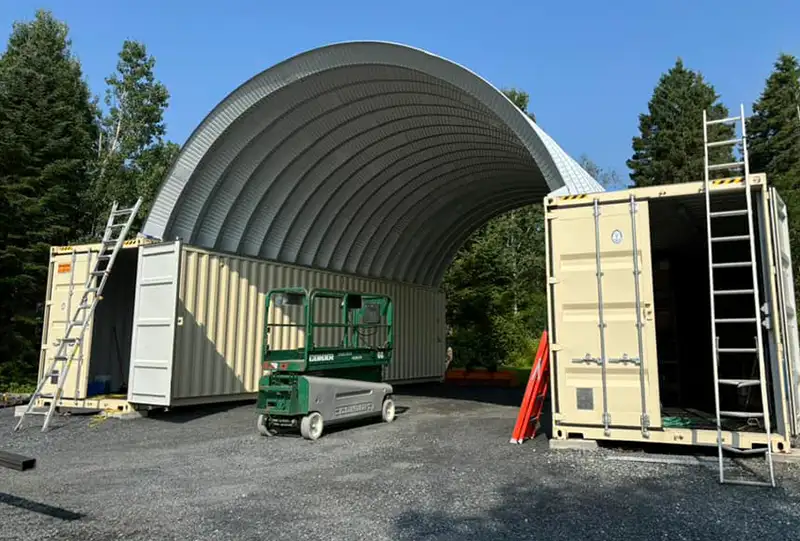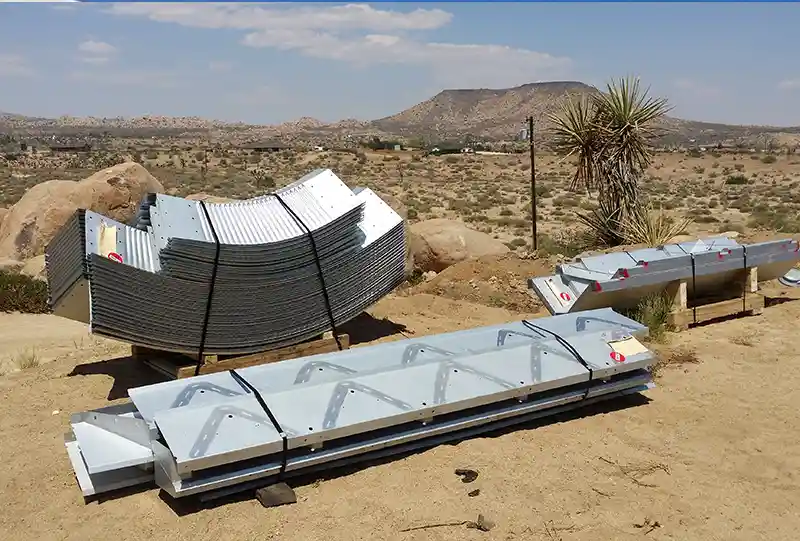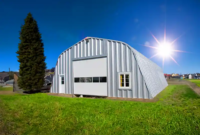Metal Roof for Shipping Containers – Best Invention of 2003

How Future Buildings Engineered the First-Ever Metal Roof for Shipping Containers
In the world of storage and construction, shipping containers have long been celebrated for their versatility. But it wasn’t until Future Buildings stepped in that the Shipping Container Cover was revolutionized, thanks to a groundbreaking innovation that would change the landscape of container shelters forever—the first-ever steel shipping container cover system. Combining strength, durability, and adaptability, this invention became the gold standard for metal roofs for shipping containers.
This article takes you through the origins of this game-changing product and how Future Buildings led the charge in imagining the potential of steel container cover shelters.
The Origins of the Steel Shipping Container Cover
Before Future Buildings made history, shipping containers were often used as standalone units. They were practical for temporary storage, small-scale workshops, or even makeshift offices, but there was a clear limitation: the space between containers remained underutilized. Worse still, the containers themselves often needed an additional protective layer against the elements, and connecting two containers to form a more functional shelter was a challenge.
The engineering team at Future Buildings saw this gap and realized that shipping containers could be more than just isolated units—they could be part of a larger, more flexible system. That’s when the idea for a steel roofing system designed specifically for shipping containers was born.
How Future Buildings Engineered the Game-Changing Solution
In 2003, Future Buildings engineers, known for their expertise in creating durable metal structures, began developing the first steel shipping container cover. This wasn’t just any roofing system; it had to be designed to integrate seamlessly with the dimensions and structure of standard shipping containers, ensuring a tight fit while remaining easy to install.
The idea was to create a system that could not only bridge two or more containers but also withstand extreme weather conditions. This led to the creation of the Steel Shipping Container Cover System, a groundbreaking innovation in the world of container shelters.
The Revolutionary Design: Simple Yet Strong Quonset Hut Style
The first version of the steel shipping container cover featured a corrugated arch-style roof made of galvanized steel, which could easily connect to two standard shipping containers. The arch design (Quonset Hut) was chosen for its strength and ability to distribute weight evenly, making it highly resistant to wind, snow, and rain—an ideal solution for any climate or loads.
The system allowed for flexibility. Whether the user needed extra storage space, a workshop, or even an open-air market space, this steel container cover system could be easily expanded by adding more containers and roofing sections.
This breakthrough wasn’t just about practicality; it was also about durability. The steel material used in these covers was corrosion-resistant, ensuring a long lifespan and low maintenance. This innovation also provided insulation options for users who wanted to convert their container spaces into habitable environments.
The Immediate Impact: Transforming the Container Shelter Market
Once the steel shipping container cover was introduced, it quickly gained popularity across industries. Agricultural businesses used them to create flexible barns, construction companies adopted them for on-site offices and storage, and individuals even began using them to construct off-grid homes. The system was so easy to assemble that it required minimal tools and could be set up in just a few hours.
Future Buildings didn’t stop there. They soon developed an entire range of steel container cover shelters to suit different purposes. These included designs for residential use, commercial storage, and even large-scale industrial applications.
The innovation of metal roofs for shipping containers turned Future Buildings into a leader in the modular building space, offering flexible, durable, and weather-resistant solutions for anyone needing to extend their shipping container’s utility.
Why Choose Steel Shipping Container Covers?
Steel shipping container covers offer numerous advantages over other roofing systems. Unlike temporary tarps or wooden structures, these steel covers offer superior durability and longevity. They’re not susceptible to termites, mold, or decay, making them a low-maintenance solution that performs well in harsh environments.
Additionally, steel container cover shelters provide:
- Expanded Usable Space: By connecting two or more shipping containers with a steel roof, you can create large, weather-resistant areas.
- Versatility: From vehicle storage to workshops, container shelters can be customized to meet various needs.
- Easy Installation: No specialized tools are required, allowing for a quick, do-it-yourself setup.
- Cost-Effective Solutions: Instead of constructing a full building, use your existing shipping containers to create a functional space at a fraction of the cost.
The Future of Shipping Container Covers
With their innovative steel shipping container cover, Future Buildings has laid the groundwork for the future of container shelters. Their system has become the go-to solution for anyone needing flexible, durable, and cost-effective space. Whether you’re a business owner, a farmer, or simply someone looking to expand your storage, Future Buildings’ metal roofs for shipping containers are the answer.
As we move forward, we can expect to see further advancements in this space, with Future Buildings continuing to lead the way in creating innovative, durable, and adaptable steel container cover roofs and shelters. One example is our newest straight wall cold-formed Container Cover.
Also, feel free to check out the Shipping Container Options available at our sister company Toro Steel Buildings.
Related posts
One Comment
Leave A Comment

Latest Blogs
Your Future Building Has Arrived—Now What? A Practical Steel Building Maintenance Guide
Your Future Building Has Arrived—Now What? So, your[...]
Summer Deals on Steel Buildings
Summer Deals on Steel Buildings: Why Summer is a[...]
Hollywood’s Favorite Steel Building: The Pop Culture Rise of the Quonset Hut
The Pop Culture Rise of Quonset-Style Steel Buildings If you’ve[...]
How One Canadian Customer Transformed Their Business with a Future Buildings Quonset Hut! 🇨🇦
The Story of Emma and David: A Business Transformation[...]











Shipping Container metal Roofing
What is the widest inside measurement that you guys sell? Height aswell?
Can you please let me know if it meets Kitimat BC snow loads?
Pricing on a few different sizes shipped to Kitimat.
Thank You
Steve Boudreau